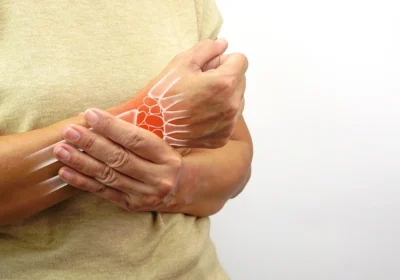
The Silent Risks of Untreated Lyme Disease
Lyme disease is among the fastest growing vector-borne diseases. But many falls through the cracks, either never diagnosed or not adequately treated. When Lyme disease goes untreated, Lyme disease complications ranging from the mild to the very severe can develop and impair the quality of an individual’s body and quality of life.
Early Warning Signs
Lyme disease, in its early stages, often looks like the flu. Patients may also have fever, fatigue, headache, or muscle aches. A bull’s-eye-shaped rash may develop around the tick bite, and not everyone gets it.
Treatment is typically simple and quite effective at this point. But if it’s not treated right away with medicine, the bacteria can travel to the other systems in the body, causing the disease to become much more difficult to control.
What Happens If It Goes Untreated
Among the most serious of the dangers of untreated Lyme disease is the risk that your condition could develop into chronic Lyme disease. The culprit bacteria — Borrelia burgdorferi — can attack the joints, nervous system, and even the heart. This can lead to a number of distressing symptoms including:
- Severe joint pain and swelling
- Persistent fatigue and brain fog
- Irregular heartbeat or palpitations
- Problems with the nervous system, including tingling, numbness, or memory loss
They can surface weeks, months, and even years after the tick bite, making diagnosis more challenging.
Long-Term Consequences
For many, when Lyme is left untreated, the damage is much more than a short-term bout of pain. Chronic pain, mood shifts, and brain fog may disrupt everyday life. Performance at work can fall, relationships can be stretched, mental health can deteriorate.
Misdiagnosis is another big problem. The Centers for Disease Control and Prevention (CDC) reported that many people with untreated Lyme disease are given incorrect treatment for other ailments, which delays care and enables the infection to spread.
The Importance of Early Detection
The greatest protection against long-term effects of Lyme disease is prompt treatment. If you live in or visit places where ticks are prevalent, you should:
- Check for ticks after being outdoors
- Keep tabs on any unusual symptoms, even if they are mild
- Get help right away if you notice signs of infection
Fast treatment dramatically improves the odds for a full recovery with no long-term damage.
Treatment Approaches
Conventional treatment for Lyme disease typically consists of taking antibiotics for several weeks. In some patients with persistent symptoms, supplemental treatments may be needed with respect to pain, inflammation, or neurological symptoms.
Sometimes, supportive care helps as well. An anti-inflammatory diet, stress management, and good rest can all help bolster the body while it’s recovering.
Final Thoughts
Lyme disease can begin as a series of mild, flu-like symptoms, but neglect it and it could end up proving to have serious lifelong consequences. Untreated Lyme disease can affect not just physical health, but also the emotional wellbeing and quality of life.
Take action on prevention, early detection, and timely treatment to prevent from the hidden risk of this emerging health issue. For accurate information always consult established health care professionals and go to evidence based sources.


















